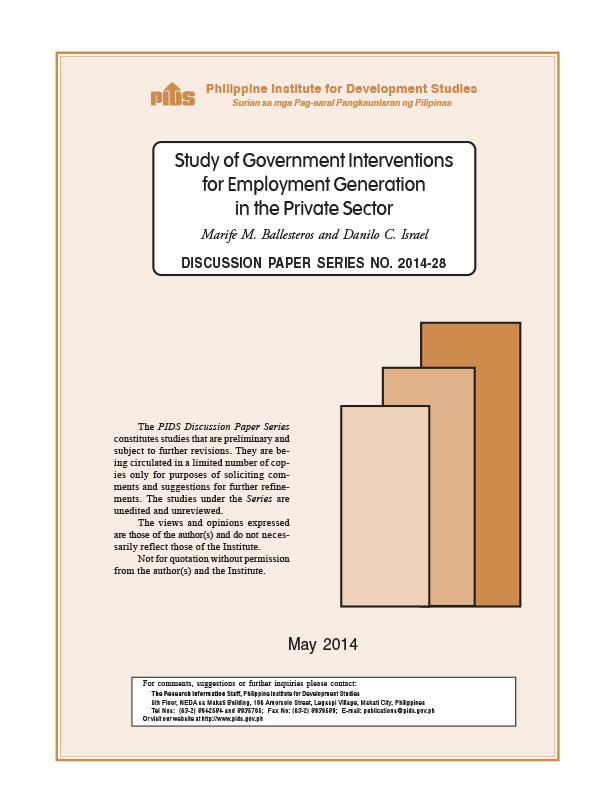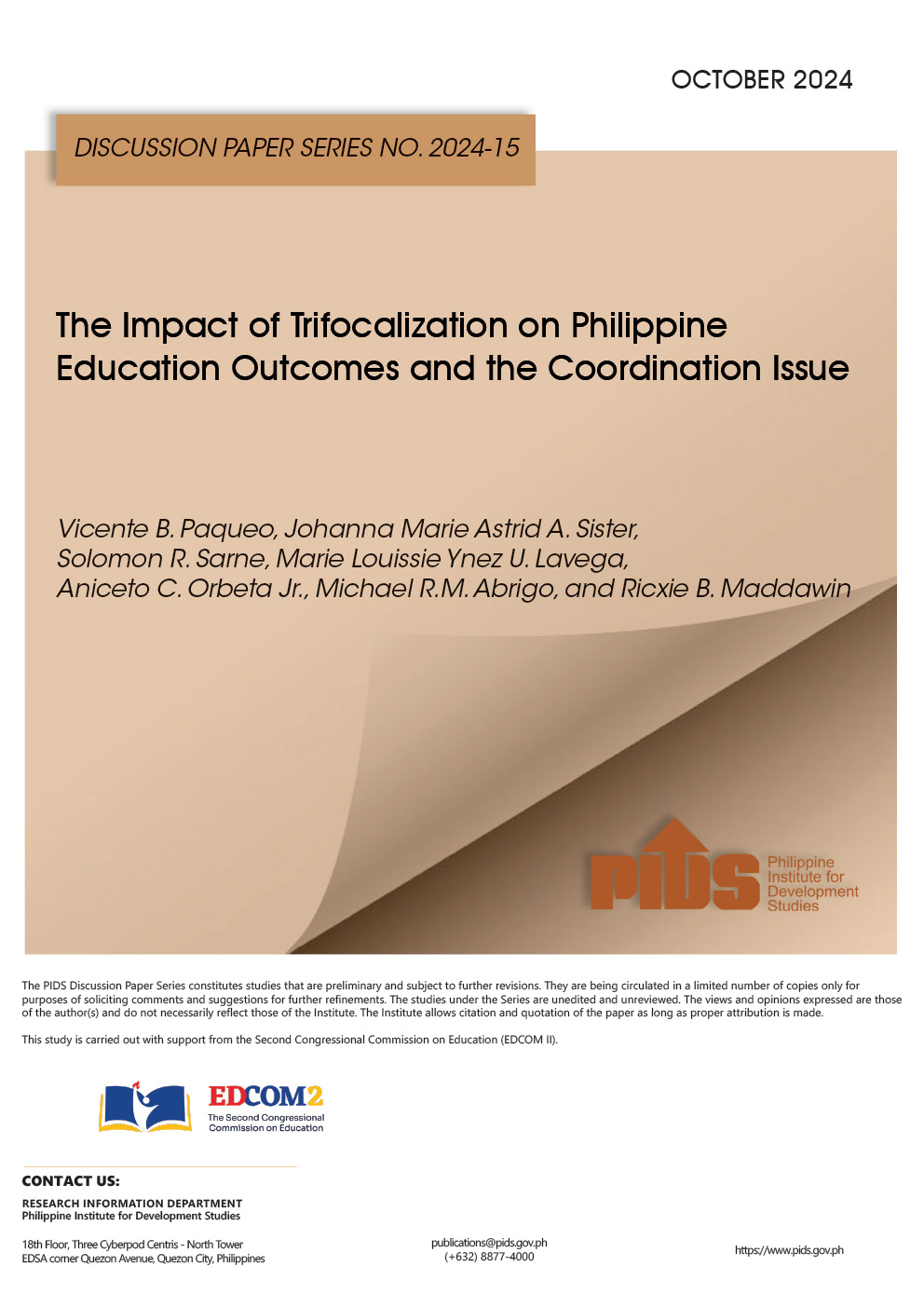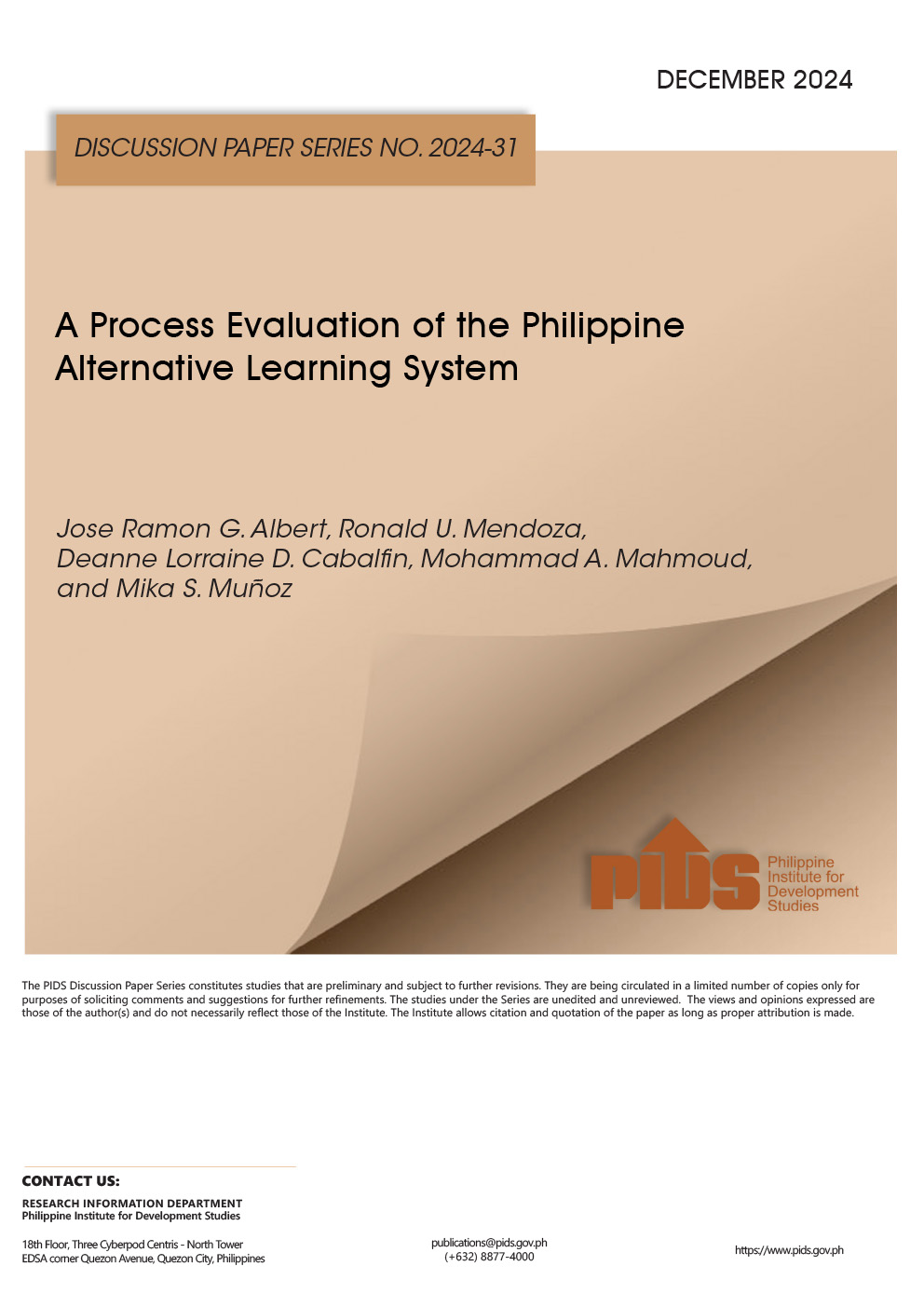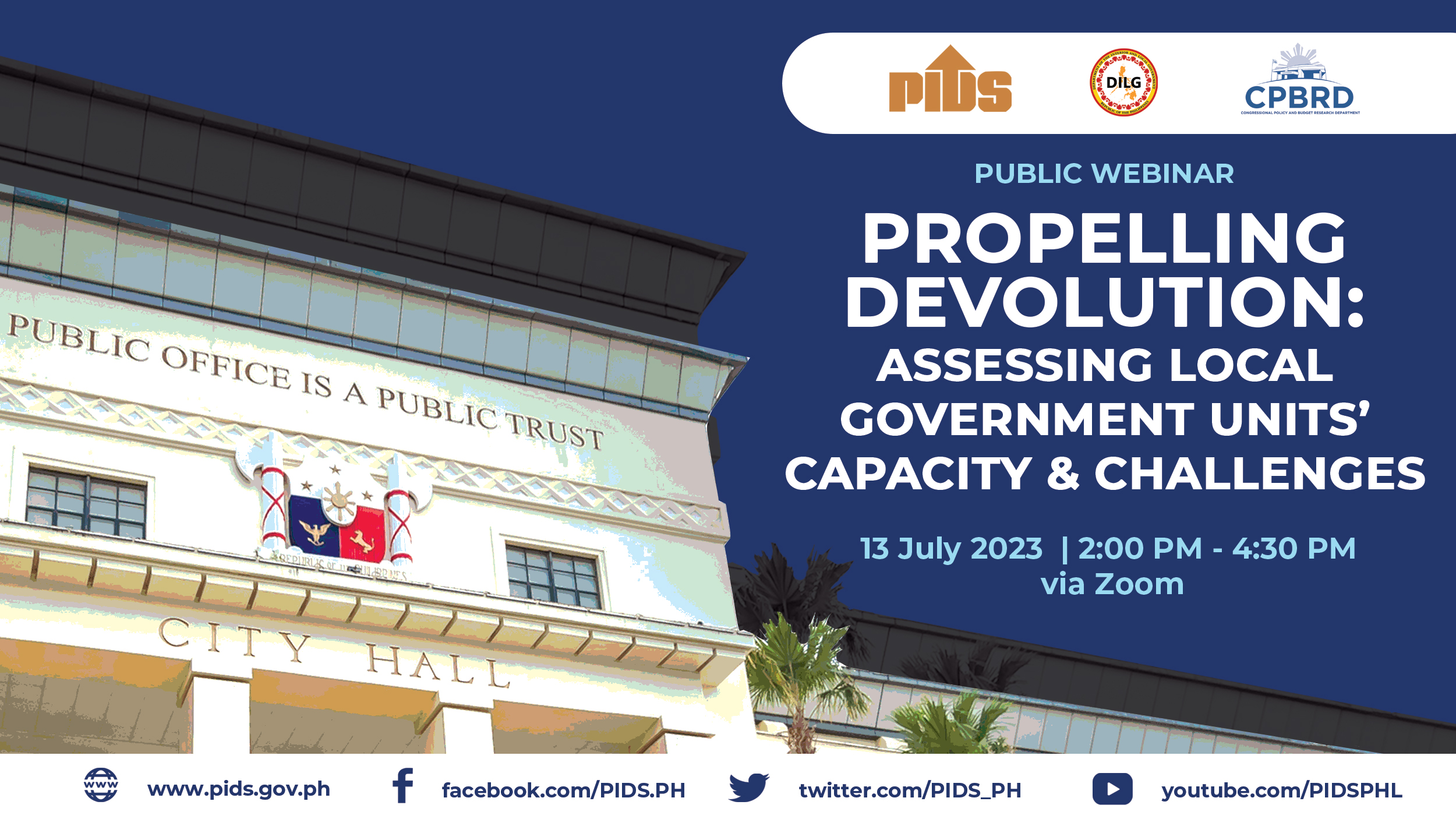Economic growth in the Philippines has not been accompanied by significant improvements in employment. Government thus implemented Active Labor Market Programs or ALMPs as one of the strategies to improve the chances of getting jobs of those in disadvantaged sectors. The programs specifically targeted skilled, semi-skilled, and low-skilled workers in the community through the infrastructure and non-infrastructure projects of national government agencies, local government units, government-owned and -controlled corporations, government financial institutions, and public-private partnerships in the national, regional, provincial, city, and municipal levels. Overall, ALMPs have been primarily adopted as stop-gap measures to address adverse effects of economic crises on employment.
The employment performance of these programs appears transitory and short term. Although some programs exceeded the employment targets, it is not clear how these numbers are translated at the macro level. The programs are apparently intended to address other social issues such as poverty and social/human development or community development rather than making an impact on net employment. These inferences however need to be validated through in-depth impact analysis of specific programs, which was not possible under this study. To provide effective evaluation of these studies, there is a need to create convergence and agreements among key departments as regards the methodology and definitions in identifying and counting of jobs. The absence of a central monitoring and evaluation office in each department has also created difficulty in identifying and integrating information and data.
Citations
This publication has been cited 1 time
- World Bank. 2016. Republic of the Philippines labor market review. World Bank Publications - Reports 24768. The World Bank Group.













